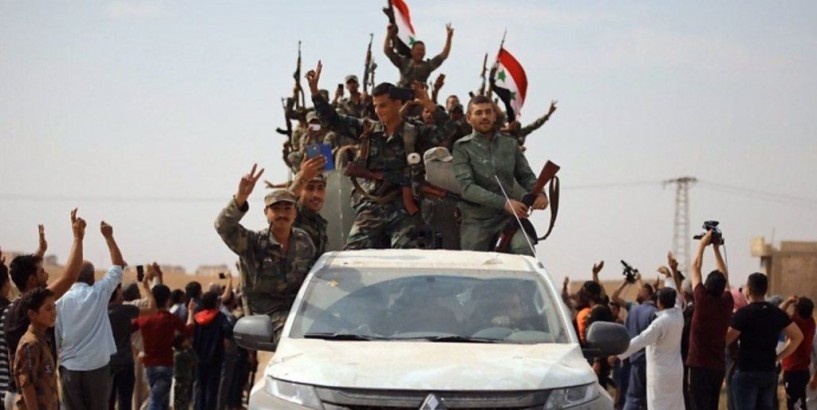US President Donald Trump has faced mounting pressure to take action against Turkey - a key Nato partner - including from Republicans usually loyal to his administration. What's the latest on the ground?
Syrian government forces on Tuesday entered the strategic town of Manbij, inside the area where Turkey wants to create its "safe zone". Media playback is unsupported on your device Media caption The BBC's Martin Patience explains what's behind the conflict
Meanwhile, Turkish troops and pro-Turkish, anti-government fighters had also been gathering near Manbij.
Over the past two years, hundreds of US troops have visibly patrolled the strategic town, but they left earlier this week.
On Tuesday, Russia - a key ally of Syrian President Bashar al-Assad - said its forces were patrolling along the "line of contact" between Syrian and Turkish forces.
Moscow describes the Turkish offensive as "unacceptable". On Tuesday, President Erdogan and his Russian counterpart Vladimir Putin discussed the issue in a phone call.
For now, Syrian forces have not been deployed between Tal Abyad and Ras al-Ain, where Turkey has focused its efforts. How did we get here?
Kurdish-led forces have been a key ally of the US in the fight against the Islamic State (IS) group in Syria.
They described the US withdrawal, which preceded Turkish action, as a "stab in the back". Image copyright AFP Image caption A Kurdish Syrian woman cries during the funeral of five SDF fighters in Ras al-Ain
There are fears the destabilisation could lead to a resurgence of so-called Islamic State (IS), as thousands of former fighters and their relatives are being detained in northern Syria.
Hundreds of IS family members are said to have already escaped from one camp.









